How to Eat Ramen for Foreign Tourists 2

Table of Contents
1. Introduction
2. Classification of Ramen
2-1. Shoyu (Soy Sauce) Ramen
2-2. Shio (Salt flavored) Ramen
2-3. Miso Ramen
2-4. Tonkotsu (Pork bone) ramen
2-5. Tori-Paitan Ramen (Whitish chicken bone soup)
2-6. Tsukemen
2-7. Abura Soba
3. Toppings
4. How to order ramen
5. Ramen consumption ranking and local specialty ramen in top cities
2-4. Tonkotsu (Pork bone) ramen
Unlike “soy sauce,” “shio,” and “miso” ramen, which are named after the seasonings used to make them, tonkotsu ramen is named after the pork bones from which the broth is made.
The soup is a cloudy white emulsion of fat and gelatinous substances from the pork bones, which are boiled over high heat for a long time.
Tonkotsu ramen is sometimes referred to as Hakata ramen or Nagahama ramen (both from Fukuoka City), but it is said to have originated in Kurume City, Fukuoka Prefecture.
In 1937, “Nanjing Senryo” in Kurume City developed Tonkotsu Ramen based on “China soba with menma,” which was popular in the Kanto region, and “Nagasaki chanpon’s pork bone-based soup.”
Tonkotsu Ramen (Hakata Issou, Fukuoka Prefecture)
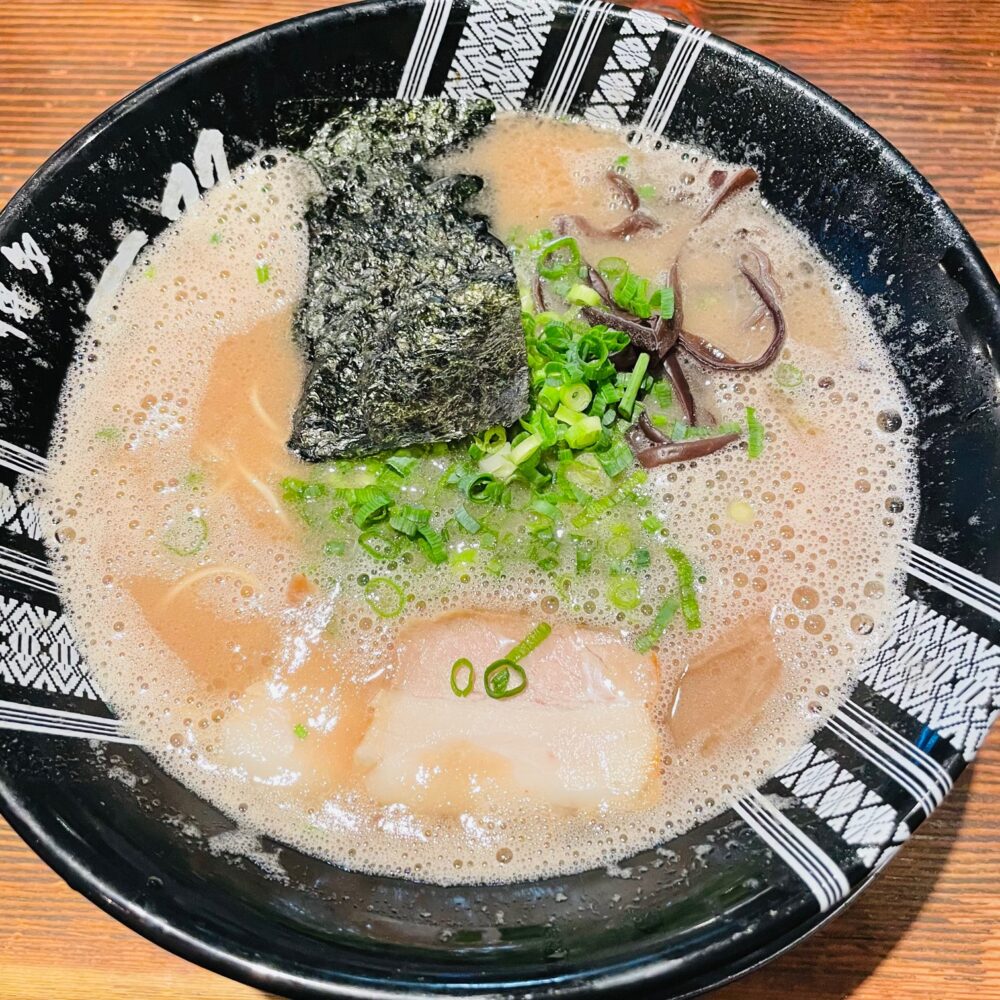 |
Tonkotsu ramen can be said to be highly liked or disliked ramen, as some ramen shops have a strong “pork bone smell.” Of course, Muslims are not allowed to eat it due to religious reasons. Because of its strong “pork bone smell,” Tonkotsu Ramen has a strong image of “rich soup,” but there is also a “light soup.
In most cases, the noodles are very thin and straight, like somen noodles, and you need to choose the hardness of the noodles when you order. The hardness of the noodles is called, from hardest to softest, “Harigane,” “Barikata,” “Kata,” “Normal,” “Yawa,” “Bari-yawa,” and so on. Many people who eat tonkotsu ramen choose “Bari-kata” or “Kata” for the hardest noodles.
Pork cha shu, cloud ear mushrooms, red ginger, spicy leaf mustard, and sesame seeds are often used as toppings for tonkotsu ramen. Many ramen shops offer red ginger, hot spicy mustard greens, and sesame seeds free of charge. On the other hand, some restaurants do not offer red ginger and spicy mustard greens, as they can greatly change the taste of tonkotsu ramen.
Tonkotsu Ramen (Nagahama number one, Fukuoka Prefecture)
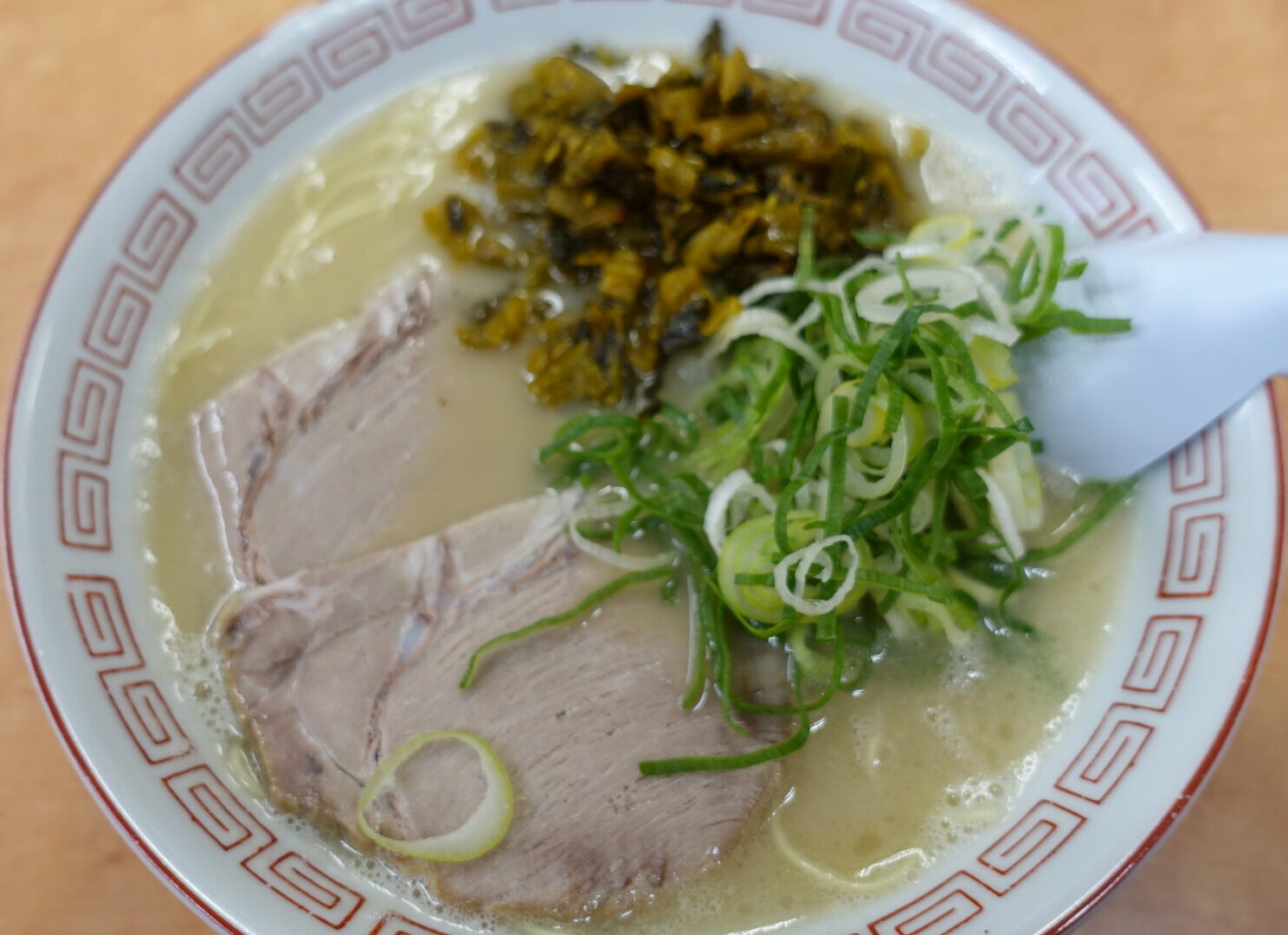 |
Another characteristic of tonkotsu ramen is the “Kaedama” (refill noodle) system. In most ramen shops, you choose “Normal” or “Large” amount of noodles when you order, but many ramen shops specializing in tonkotsu ramen adopt the “Kaedama” system, in which you order another bowl of noodles while you are eating. As mentioned above, you can also choose the hardness of the noodles for “Kaedama.”
Many people enjoy the change in taste from the first bowl of ramen by adding red ginger or spicy leaf mustard to the soup for the first time when they eat the “Kaedama.” Local ramen” includes Kurume ramen, Hakata ramen, Nagahama ramen, Kumamoto ramen (Kumamoto Prefecture), Miyazaki ramen (Miyazaki Prefecture), and Kagoshima ramen (Kagoshima Prefecture), where it originated. Most of the ramen is characterized as being from Kyushu.
Kurume Ramen (Menshi, Fukuoka Prefecture)
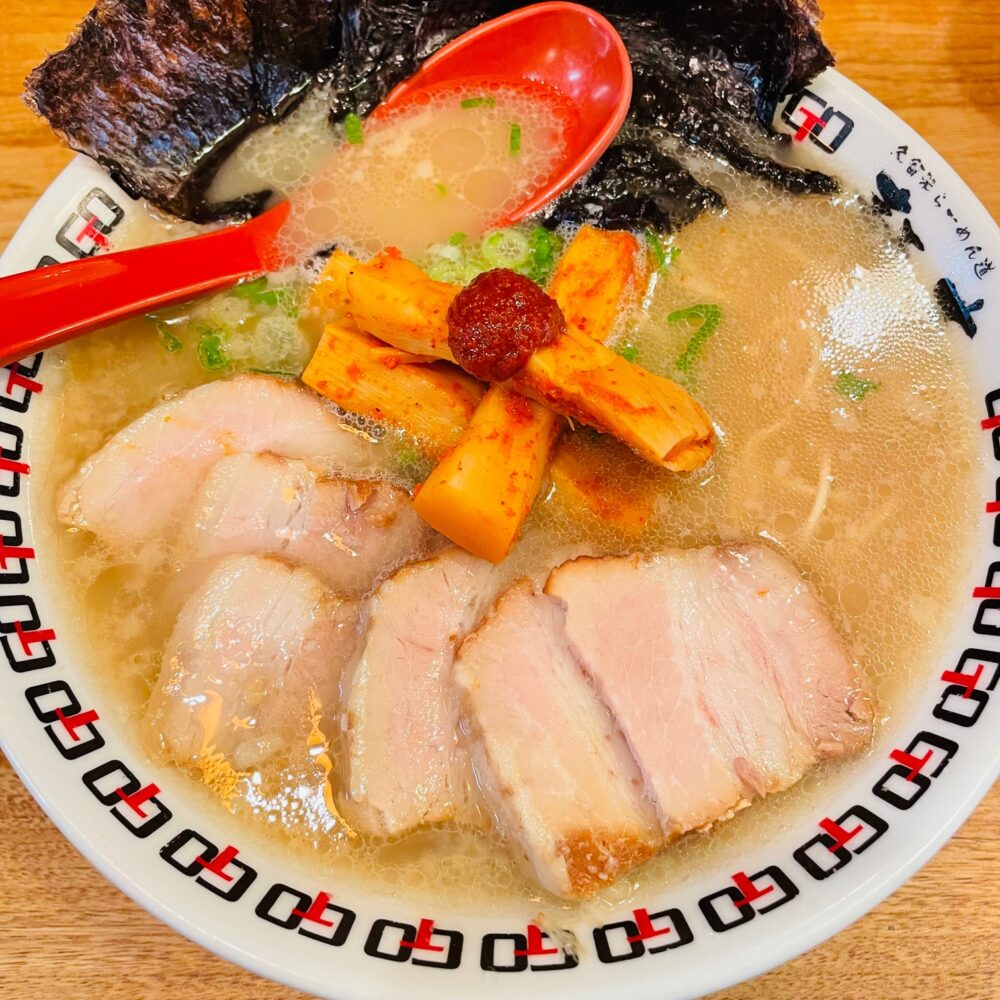 |
Another characteristic of tonkotsu ramen is that there are many derivative forms, such as tonkotsu shoyu ramen. Local specialty ramen of tonkotsu shoyu ramen includes Wakayama ramen (Wakayama Prefecture), Tokushima ramen (Tokushima Prefecture), and Ie-Kei ramen (Kanagawa Prefecture).
Tonkotsu Shoyu Ramen (Taiheizan, Fukuoka Prefecture)
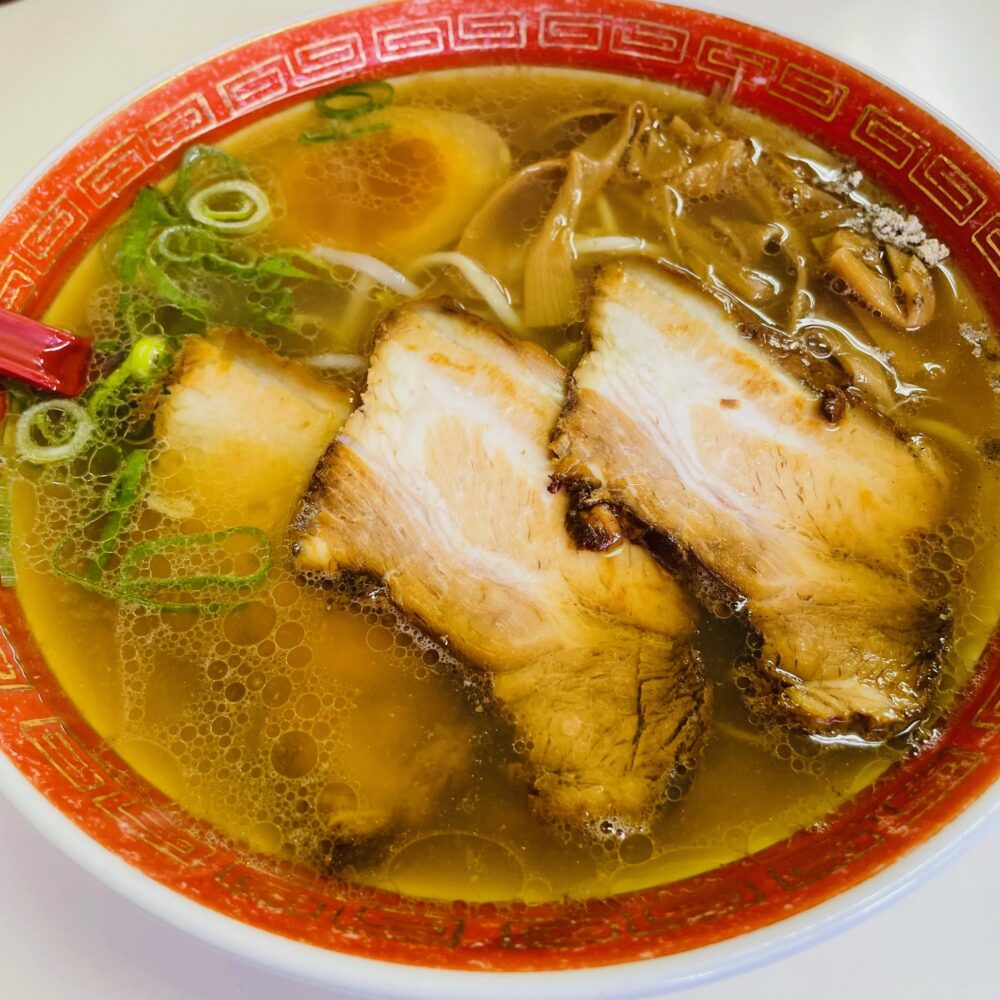 |
Tokushima Ramen (Takara Ramen, Tokushima Prefecture)
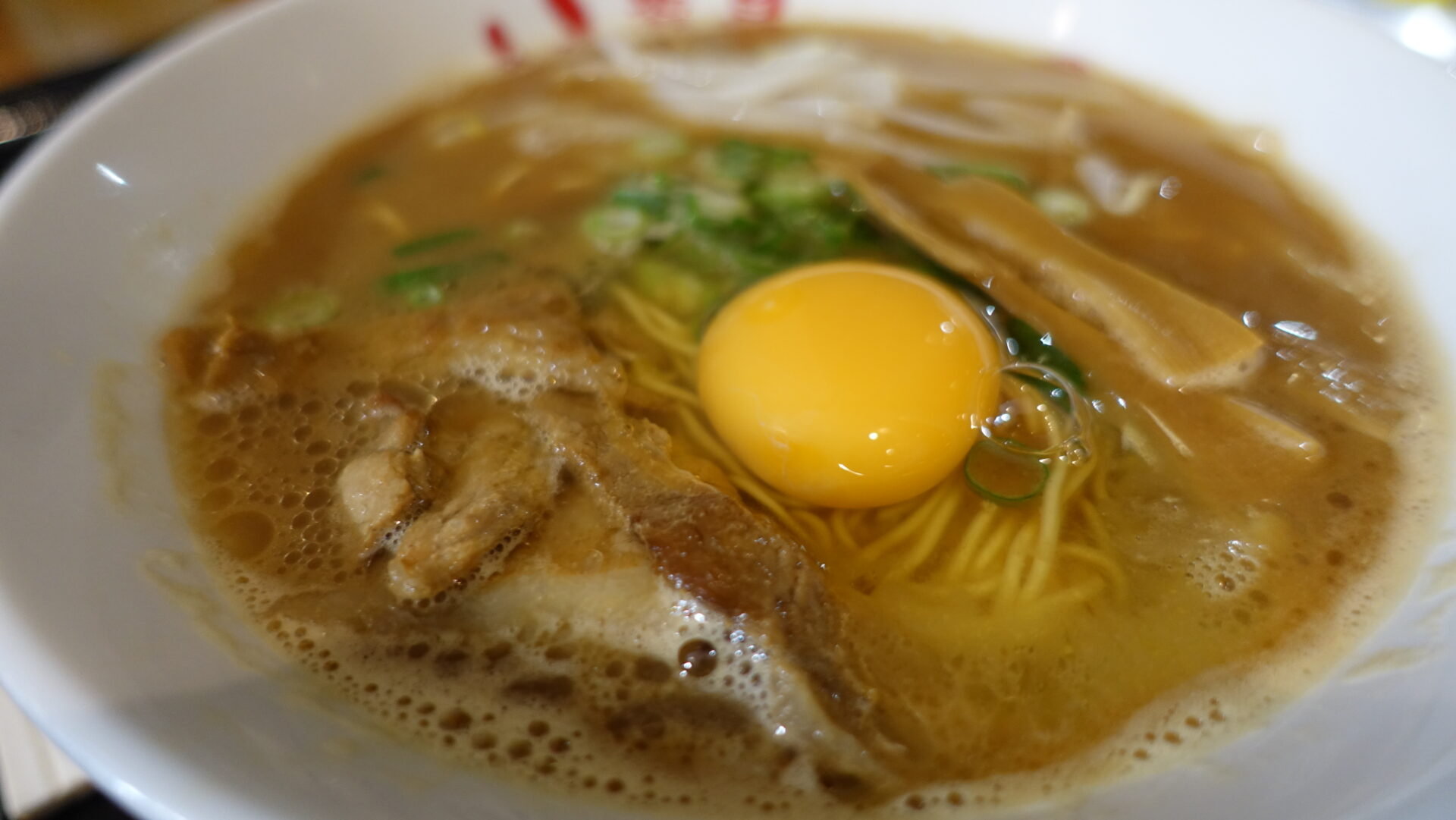 |
2-5. Tori-Paitan Ramen (Whitish chicken bone soup)
Tori-Paitan ramen is made with a cloudy white-colored soup made by simmering chicken bones and whole chickens for a long time. In addition, many ramen shops add chicken feet (Momiji), pork bones, vegetables, and other ingredients to create a thicker soup.
Tori-Paitan Ramen (Sanpoichi, Tokyo)
 |
Tori-Paitan Ramen (Ichigaku, Tokyo)
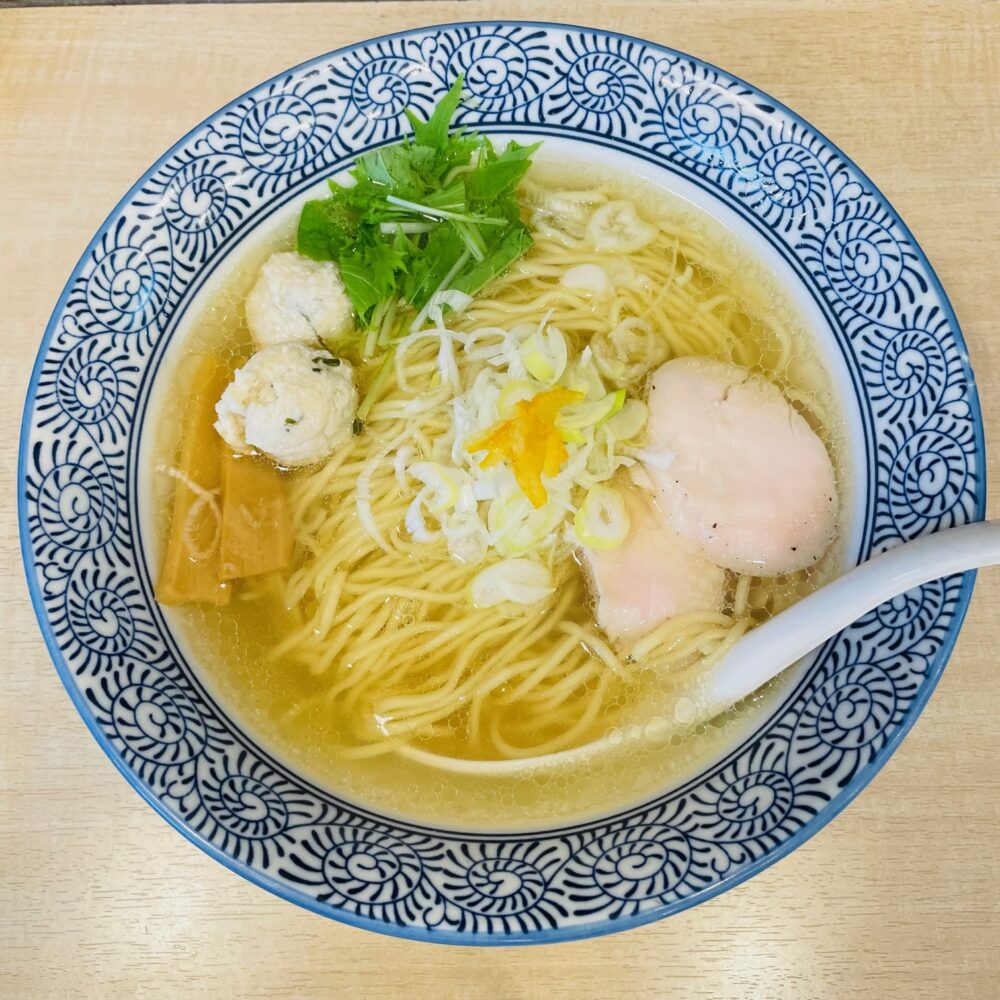 |
There is also Chicken Shiratsuyu Ramen with a thicker, cream potage-like soup. It is also called “Chicken Potage Ramen” and is popular among women for its taste and appearance.
Tori-Paitan Ramen (Fukuryu Ramen Wadachi, Tokyo)
 |
Tori-Paitan Ramen (Kageyama, Tokyo)
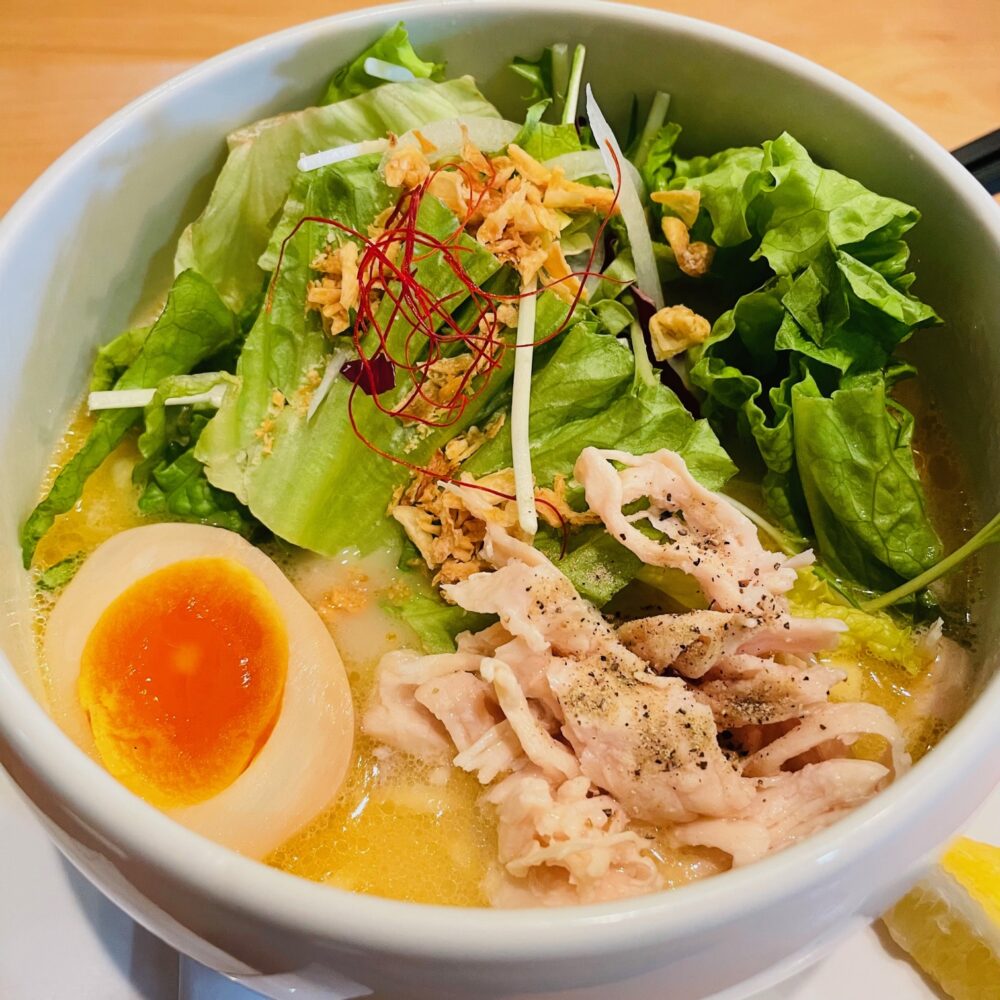 |
The whitish chicken bone soup itself is not a particularly rare soup, as it has been found in Chinese cuisine since ancient times. I love the rich “sand pot clay chicken” soup at Jiyuan Szechuan Restaurant (驥園川菜餐廳) in Taipei City, Taiwan, and the flavor trend is similar to that of rich whitish chicken bone soup.
Tori-Paitan ramen is said to have become famous in the Japanese ramen world only after 2005, making it a fairly new type of ramen compared to the four types of ramen mentioned above. Chicken cha shu pork is a good topping for tori-paitan ramen. Some ramen shops offer yuzu kosho (Japanese citrus pepper) for the light taste of tori-paitan ramen.
Tori-Paitan ramen has a short history of becoming mainstream, and there does not seem to be any famous ramen that can be called “local specialty ramen,” with individual shops and affiliated shops competing with each other for the best taste.
Tori-Paitan Ramen (Kaguraya, Tokyo)
 |
2-6. Tsukemen
Tsukemen is ramen noodles that are boiled, then cooled in cold water and served in a separate bowl with a thick dipping soup. Tsukemen is also called “Mori-soba” or “Tsuke-soba. The noodles served warm are called “Atsumori” and are often eaten in winter.
Tsukemen (Tsujita, Tokyo)
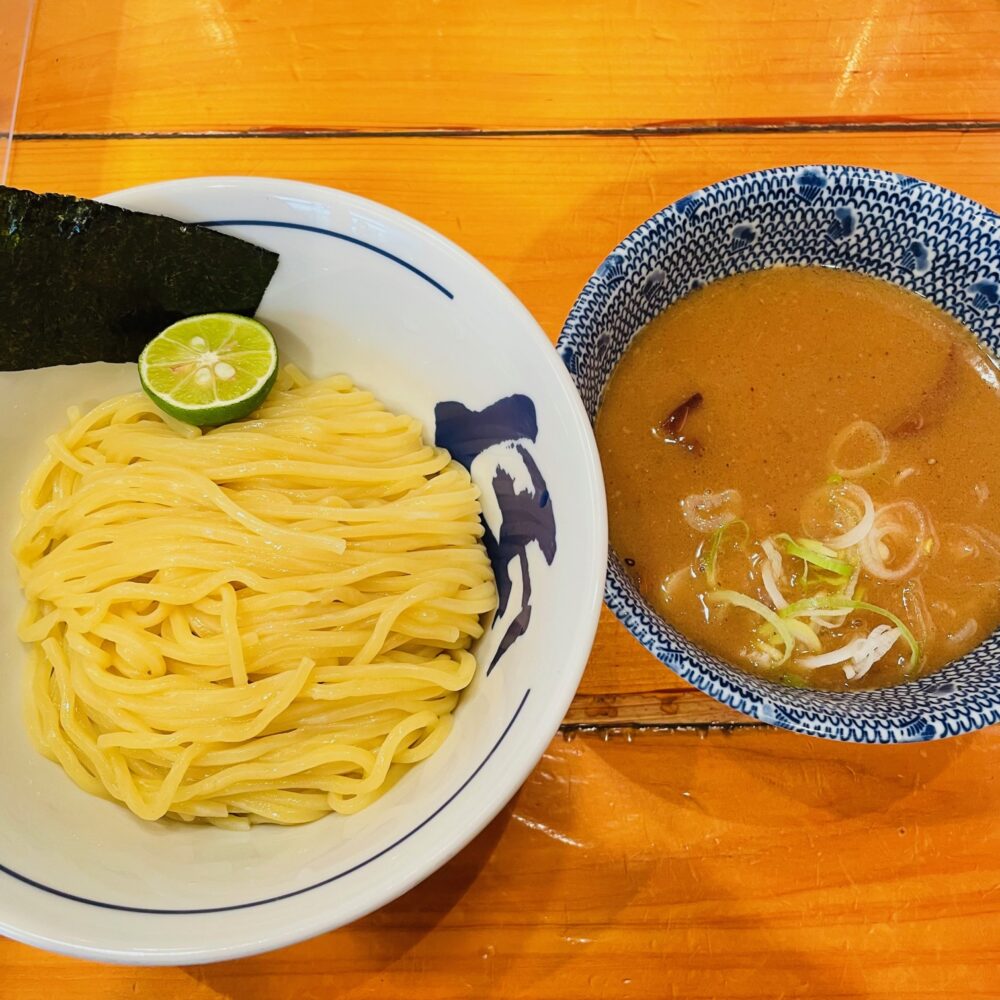 |
It is said that “Taisho-ken” in Tokyo developed and commercialized tsukemen in 1955, and in 2000, “Ganja,” a ramen restaurant in Kawagoe City, Saitama Prefecture, started a new trend of tsukemen with fish powder, extra-thick noodles, and thick seafood soup, which led to a nationwide boom in tsukemen. For this reason, most tsukemen dipping sauces (soups) are rich seafood soups, but there are also various flavors, such as miso and spicy miso flavors.
The “Soup-wari” system, in which hot soup is added to the dipping soup after the noodles have been finished, has become the standard at ramen shops that serve tsukemen. Since tsukemen soup has a stronger flavor than regular ramen soup, it is usually topped with the restaurant’s original soup, such as seafood, pork bone, or chicken bone broth, so that the customer can taste the soup. The customer must order the soup by saying, “Soup-wari, please.
Tsukemen (Ore-no Sora, Tokyo)
 |
Many tsukemen specialty shops offer tsukemen at the same price regardless of the amount of noodles, such as “normal,” “medium,” and “large” portions. Tsukemen toppings include pork cha shu pork, chicken cha shu pork, and flavored eggs. Since the bowl of tsukemen is smaller than a standard ramen bowl, ordering more toppings can make it difficult to put the noodles in the bowl. For this reason, some restaurants serve toppings on separate plates. Tsukemen has a short history since its spread, and there are no regional characteristics that can be called “local Tsukemen” yet. Popular tsukemen stores in various regions compete in terms of individuality and taste.
Tsukemen (Toka, Tokyo)
 |
2-7. Abura Soba
The way to eat abura soba is different. Noodles are placed on top of the sesame oil and soy sauce-based sauce in the bottom of the bowl, and hot sauce, vinegar, and other seasonings are poured over the noodles and tossed with the sauce. In addition to hot oil and vinegar, some restaurants add mayonnaise. Aburasoba is a noodle dish similar to the mainland Chinese maze soba (noodles mixed with several ingredients), or “Ban mian 拌麺.” However, Japanese abura-soba has more ingredients and noodle volume than abura-men.
Abura soba (Menchintei, Tokyo)
 |
It is believed that abura soba originated in the Tama region of Tokyo in the 1950s. Because of its low price and large volume, abura soba became popular among students of Hitotsubashi University and Asia University, both located in the Tama area, and is said to have spread nationwide. Common toppings for abura soba are chopped small green onions and a half-boiled egg. Some restaurants offer menma (bamboo shoots), white radish sprouts, and other toppings.
Abura soba (Gachi, Tokyo)
 |
Taiwan mazesoba (Aichi Prefecture) is one of the “local specialty ramen” of abura noodles. Taiwanese mazesoba was developed in 2008 by “Menya Hanabi” in Nagoya City and is a soupless version of Taiwanese ramen with its roots in the Taiwanese noodle dish “Ta-a mi 担仔麺.” However, many Taiwanese people say that both “Taiwan ramen” and “Taiwan mazesoba” are completely different from Taiwanese “Ta-a mi 担仔麺.”